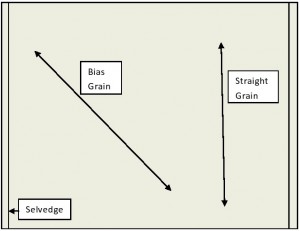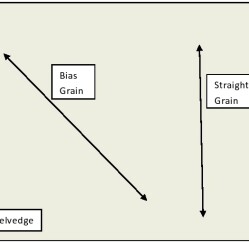What is Stay Stitching and Why do we need it? When you read through or follow dressmaking patterns you will often see references to the phrase “stay stitching” but what actually is it, why do we need it and are there any ways that we can skip using it when we are stitching? What is […]
Add To CartWhat is Stay Stitching and Why do we need it?
00What is Stay Stitching and Why do we need it? When you read through or follow dressmaking patterns you will often see references to the phrase “stay stitching” but what actually is it, why do we need it and are there any ways that we can skip using it when we are stitching? What is stay stitching? Stay Stitching is the term given to a row of stitches which are placed inside the seam allowance. The purpose of stay stitch is to ensure the fabric that you are using keeps its shape. When do we need it? When you cut out your chosen fabric you are normally cutting either parallel or vertical to the fabric selvedge. This process is called straight of grain. However there are also times that you will need to cut at an angle to the selvedge. This is called cutting across the grain or on the “bias”. When you make these cuts on the bias you will be exposing the stretchiest part of the fabric. In doing this you will find that the fabric is now more likely to stretch and ultimately lose its shape. Stay Stitching is the best way to offer stabilisation and protect your fabric against this occurring. How do you stay stitch? When working through your pattern you will find that there are parts that tell you which of the pattern pieces need to be stay stitched. These will normally be neck and armhole edges. In order to complete the Stay Stitch you will need to carefully sew a line of stitches around the curved edge, close to it but always within the seam allowance. Sewing within the seam allowance will mean that you will not be able to see the stitches on the finished garment once you have sewn the seam. It is important at this stage to be careful not to stretch the fabric as you sew it. Stay stitching is often removed after the seam is sewn. Your pattern will guide you with this. Can we skip it? Ultimately the answer is no as it is important to have some sort of stabilising stitch when completing a project of this type. After all, marking a garment is hard work and something that will take you time and effort. Should you choose to not Stay Stitch then you will risk the fabric stretching and your finished garment looking out...
What is Stay Stitching and Why do we need it?
When you read through or follow dressmaking patterns you will often see references to the phrase “stay stitching” but what actually is it, why do we need it and are there any ways that we can skip using it when we are stitching?
What is stay stitching?
Stay Stitching is the term given to a row of stitches which are placed inside the seam allowance. The purpose of stay stitch is to ensure the fabric that you are using keeps its shape.
When do we need it?
 When you cut out your chosen fabric you are normally cutting either parallel or vertical to the fabric selvedge. This process is called straight of grain.
When you cut out your chosen fabric you are normally cutting either parallel or vertical to the fabric selvedge. This process is called straight of grain.
However there are also times that you will need to cut at an angle to the selvedge. This is called cutting across the grain or on the “bias”.
When you make these cuts on the bias you will be exposing the stretchiest part of the fabric. In doing this you will find that the fabric is now more likely to stretch and ultimately lose its shape.
Stay Stitching is the best way to offer stabilisation and protect your fabric against this occurring.
How do you stay stitch?
When working through your pattern you will find that there are parts that tell you which of the pattern pieces need to be stay stitched. These will normally be neck and armhole edges.
In order to complete the Stay Stitch you will need to carefully sew a line of stitches around the curved edge, close to it but always within the seam allowance.
Sewing within the seam allowance will mean that you will not be able to see the stitches on the finished garment once you have sewn the seam. It is important at this stage to be careful not to stretch the fabric as you sew it.
Stay stitching is often removed after the seam is sewn. Your pattern will guide you with this.
Can we skip it?
Ultimately the answer is no as it is important to have some sort of stabilising stitch when completing a project of this type.
After all, marking a garment is hard work and something that will take you time and effort. Should you choose to not Stay Stitch then you will risk the fabric stretching and your finished garment looking out of shape- meaning that your efforts will be wasted.
As well as this if you are sewing together two pieces of fabric, one cut on the bias (also known as “off straight of grain”) and one cut on the straight of grain they will be easier to sew together if you have stabilised the fabric and stopped is stretching.
We believe that as it doesn’t take long to stay stitch is well worth using it.
However opinion is divided on the benefits of stay stitching and some people prefer other methods of stabilising the fabric. These include using interfacing or sewing tape around the edge to stop it stretching.
Still thinking of skipping the stay stitching?
Before you decide that Stay Stitching isn’t for you, why not try it for yourself. It’s easy to do.
Take some offcuts of fabric, cut curved shapes out of it and pull them in different directions.
Now take a look at this piece of fabric, you may be surprised by how much the fabric distorts.
Think about if this was a project that had been weeks in the planning and making. Would you want this to happen to a garment that you had spent time making?
If the answer is no then we highly recommend taking the time out to complete Stay Stitching and preserve your project!




